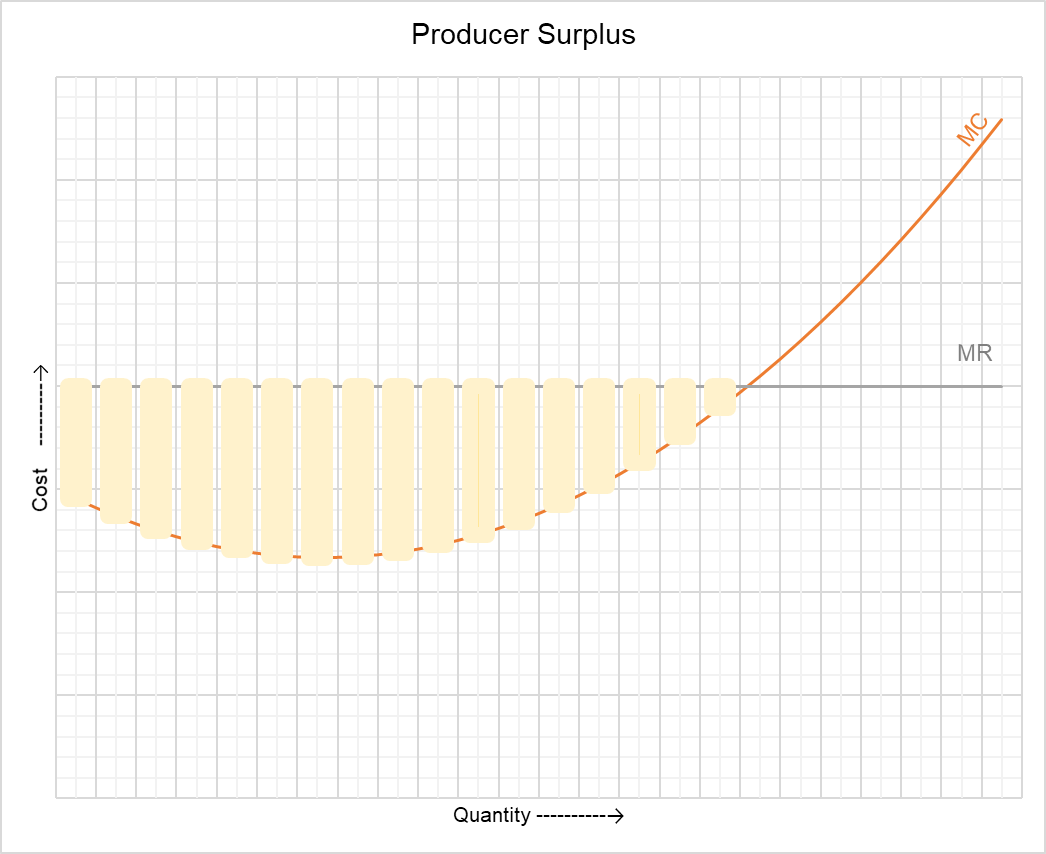Producer Surplus
Producer surplus is the amount which a producer gains by participating in the market. It equals the excess of the amount which a unit of a good fetches in the market over the minimum amount at which the producer is willing to supply it.
The sum of producer surplus and consumer surplus is a measure of economic welfare. Economists study the effect of different economic systems/interventions by comparing how they change the sum of producer surplus and consumer surplus. The loss of producer or consumer surplus is called deadweight loss.
A producer faces an upward sloping supply curve which means that he is willing to sell first unit at say P1, second unit at say P2, third unit at P3 and so on such that P3 is greater than P2 which in turn is greater than P1. The price which he actually receives in the market is the equilibrium price P which is determined by the intersection of the relevant supply curve and demand curve. Producer surplus thus equals the sum of the positive differences between P and P1, P and P2, P and P3.
Formula
Where R is revenue and VC is variable cost, the equation for producer surplus (PS) can be written as follows:
$$ \text{PS}=\ \text{R}\ - \text{VC} $$
Producer surplus differs from profit (π) in that profit is determined by subtracting both variable cost and fixed cost from revenue while producer surplus is determined by subtracting just the variable cost.
$$ \text{Profit}\ (\pi)=\ \text{PS}\ - \text{FC} $$
Graph
On a graph, producer surplus is represented by the area between the marginal revenue curve and the marginal cost curve. Equivalently, it equals price minus average variable cost multiplied by output.

Example
Akbar is a fruit vendor who sell oranges in streets of Islamabad. Early each morning he replenishes his stock from the central fruit market. He is willing to sell the first dozen of oranges for 200 rupees, second dozen for 225 rupees, third dozen for 250 rupees, fourth dozen for 275, fifth dozen for 300 rupees, sixth dozen for 325 rupees and so on. Consumers are willing to buy a dozen for 300 rupees only.
Producer surplus equals excess of market price over the price which a producer is willing to supply a product.
Akbar's producer surplus = (300 − 200) + (300 − 225) + (300 − 250) + (300 − 275) + (300 − 300) = 250
Let’s say Akbar bought a stock of 5 dozens of oranges, his total revenue works out to 1,500 (=5 × 300) and his total variable costs (including normal profit) equals 1,250 (=200 + 225 + 250 + 275 + 300). In this case, we can use the general formula for producer surplus as follows:
$$ \text{PS}=\ \text{1,500}\ - \text{1,250}=\text{250} $$
by Obaidullah Jan, ACA, CFA and last modified on